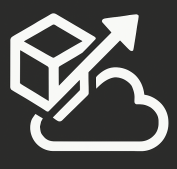I just watched the TechEd Session on the Future of VS ALM by Cameron Skinner and Brian Keller: http://channel9.msdn.com/Events/TechEd/NorthAmerica/2011/FDN03. Here is a recap of what they talked about:
– Since they released TFS in 2005, their main priority has been collaboration and they will continue down that path.
– A project/system needs transparency in order to be able to make changes to the process, code, etc.
– They talked about the Virtuous Cycle graph that they showed at the keynote. Product Backlog –> Sprint –> Working software –> Ops Backlog –> Monitor –> Requirements –> Back to the beginning of the cycle.
– IntelliTrace in Production: Historical debugging feature. In the current release, you can capture Intellitrace in a debugging environment. They are going to make the data “collectors” freely available in vNext so we can distribute them to as many servers as we want. You can bind, start, stop intellitrace remotely from PowerShell. This allows you to capture everything that is going on behind the scenes in your app in order to debug any issues. I have not actively used IntelliTrace, but this is probably the push that I needed to check it out. Like they said in the talk: “it’s like a VCR for your code”.
– Product Backlog (Scrum/Agile): They are extending the Web Access portal to give you a lot more planning functionality with task board. There are two new tabs to support agile development: boards and backlogs. The backlog tab allows you to enter new stories, move them into a sprint, reprioritize items, view sprint velocity charts, view sprint backlog, break down a story into tasks, view team capacity. Pretty much everything that you need in order to manage your sprint. The board tab allows you to move tasks from one state to another, and re-assign tasks. This is a really good tool for your daily Scrum/Stand-up meetings.
What I really like about this is that it’s using real-time data and you don’t have to wait for the Analysis Services database to be updated.
– New “My Work” tab: There is a new “suspend” functionality that works alongside the current “shelve” feature in TFS. Not only does it save your code, but it also saves all your Visual Studio configuration, resets your screens, breakpoints, etc. So it takes you back to where you were (or as close to that) as soon as possible.
– They added a “Team Navigator” tab, that seems to be supplementing (not replacing) Team Explorer. From there, you can go to “My Work”, “Work Items”, “Source”, “Builds”, “Reports”, “Documentation”. So most of what you can do from Team Explorer, just a different way to do it. The interface to check-in pending changes looks like it also got a facelift.
– Analysis: New “Analyze Solution for Code Clones”. It gives you a way to see how much “copy/paste” exists in your application. It looks for “semantically similar or identical code”. It gives you a way to find places in your code that can be refactored. You can also select a block of code and search for the same pattern. You get “exact”, “strong”, and “medium” matches.
– Unit testing – They are allowing you to integrate nUnit, xUnit, and other unit testing tools with the product. So you are no longer just limited to MSTest. So this means that your test results for all your testing frameworks will be bundled together and the user experience will be the same for all the tools.
– Work Item search: They added a search toolbar on the Team Navigator tab. Currently it is not very easy to search through Work Items within Visual Studio.
– Code Review Tool: They added a code review feature in Team Navigator. It creates a shelveset and a code review request is sent to the reviewer. When the review is accepted, the reviewer will view notes, code differences. Comments can be associated with a specific line of code, similar to the Comments that you get in Word when you turn on change tracking.
– New diff tool – Color-coded diff tool. It is much better than what ships with Visual Studio at the moment.
– Stakeholder Feedback tool – They are extending the testing tab that you currently get when testing to Microsoft Test Manager so that it logs everything that you do in an application. A Stakeholder can capture notes, screenshots, notes, etc. Under the covers, it is doing an action recording just like MTM does. This allows you to create a test case later. It records audio and video so you can later listen to the conversation from the stakeholder or tester.
Overall some very impressive changes. It’s great to see such polished features this far ahead of their release.
